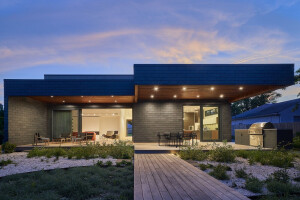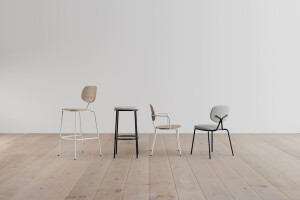In Homécourt, Meurthe & Moselle Habitat, which is the main public housing organisation in this regional department, launched an operation to build a new neighbourhood of intermediate housing. The remarkable thing about the project developed by Atelier Martel is the layout chosen for the group of 19 individual houses and 16 apartment blocks that form the programme. Dictated by bioclimatic concerns and the desire to minimise noise pollution from the road running alongside the plot, the urban composition alternates between solids and voids in the constructed and unconstructed rows located perpendicular to the district’s main street.
The entrances to the estate are marked by four small four-storey apartment blocks, prolonged by the houses to establish a specific scale for the neighbourhood, an intermediate scale. This “heliotrope” estate is designed to be open and porous, combining individual housing and shared apartment buildings to cultivate a “rurban” lifestyle and encourage sociability. The boundaries of the project were also taken into account, notably in relation to roads and public spaces, in a collaborative design in association with the town hall and the artist Matthias Biberon. The constructed grid is inspired by the principles of Modern urbanism and the typologies of terraced housing. Each “intermediate” terrace is composed of five houses with a garage and a small residential building containing four apartments. Their long, straight plans– 15.50 m x 3.60 m–form volumes that can be built at low cost and feature small south-facing façades that can be made almost entirely of glass.
The standard plan for the basic unit allows for a double-height ceiling in the living room, which opens onto a south-facing garden; above all it can encompass all the typologies of the individual and collective housing that are present, ranging from one-bedroom to four-bedroom. The development of a single grid respected a tight budget and guaranteed design and implementation of quality details— a relatively rare approach in social housing—such as tall windows with prefabricated concrete frames incorporating the blinds, zinc roofing, and openwork balcony railings in prefabricated white concrete. Conjugating the principles of Modern architecture with the gentleness of a span roof, this architecture revisits the figure of the archetype. Here Atelier Martel’s research approaches the concept of analogous architecture developed by Miroslav Sik, who advocated “designing new buildings as an integral part of the existing environment”. This posture portrays an image of quality and comfort that features a contemporary aesthetic and reinforces the attractiveness of the neighbourhood under construction




























